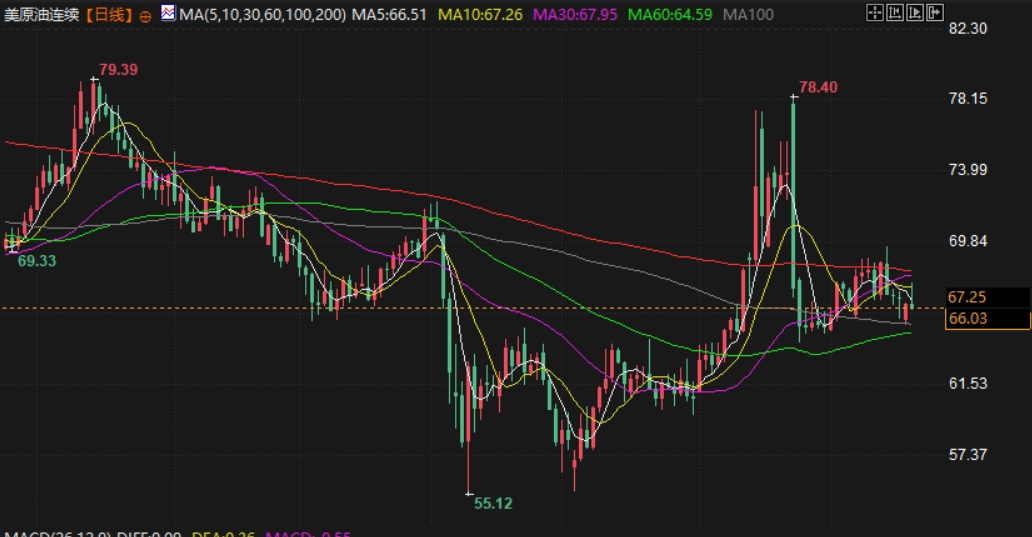Oil prices fell 2% this week, caught in a tug-of-war between long and short positions: geopolitical risks and demand concerns wrestle, and the EU's new sanctions on Russia disturb the supply outlook
2025-07-19 07:05:45

Brent crude futures fell 0.3% to $69.28 a barrel, while U.S. crude futures fell 0.3% to $67.34. That leaves both benchmarks down about 2% for the week.
In the United States, single-family homebuilding fell to an 11-month low in June as high mortgage rates and economic uncertainty discouraged home purchases, suggesting residential investment contracted again in the second quarter. But in a separate report, U.S. consumer sentiment improved in July, while inflation expectations continued to decline.
The Financial Times reported on Friday that U.S. President Donald Trump is pushing for tariffs of at least 15% to 20% in any deal with the European Union, adding that his administration is now considering reciprocal tariffs of more than 10% even if a deal is reached.
"The reciprocal tariffs currently envisioned, combined with announced sectoral levies, could bring the U.S. effective tariff rate to over 25%, exceeding the peak in the 1930s, and should increasingly be reflected in inflation in the coming months," Citi analysts said. "Rising inflation would raise prices for consumers, weakening economic growth and oil demand."
In Europe, the European Union agreed on an 18th sanctions package against Russia over its war in Ukraine, including measures aimed at further hitting Russia's oil and energy industries.
The bloc will also no longer import any oil products made from Russian crude, but the ban will not apply to imports from Norway, Britain, the United States, Canada and Switzerland, EU diplomats said.
Britain and the European Union will reduce the price cap on Russian oil to $47.60 a barrel from $60, Britain said on Friday, in a move that will hit Moscow's oil revenues and increase pressure on Moscow over its war in Ukraine.
The plan also bars EU operators from using the Nord Stream pipeline, an offshore system built under the Baltic Sea to transport Siberian natural gas from Russia to Germany.
“Britain and its EU allies are further cutting off the most important source of funding for the Kremlin’s war in Ukraine, thereby increasing the pressure on the Kremlin to finance its war,” British finance minister Reeves said at the G20 meeting in South Africa.
Bank of America Securities recently raised its 2025 average Brent crude oil price forecast to $67 per barrel (previously $65 per barrel), and U.S. oil giant Chevron on Friday completed its $55 billion acquisition of U.S. energy company Hess after winning a landmark legal battle with U.S. oil giant ExxonMobil to gain access to the largest oil discovery in decades offshore Guyana.
Oil prices were supported by geopolitical tensions and summer demand this week, with officials pointing to Iranian-backed militias as the likely culprit behind attacks on Iraqi Kurdistan oil fields this week, though no group has claimed responsibility. Oil production in the semi-autonomous Kurdistan region has fallen by 140,000-150,000 barrels per day, more than half of the region's normal output of about 280,000 barrels per day, two energy officials said. U.S. government data on Wednesday showed U.S. crude inventories fell by 3.9 million barrels last week, while analysts polled by Reuters expected a 552,000-barrel drop.
Soojin Kim, an analyst at MUFG Bank, said Brent crude remains in strong backwardation, where near-term contracts are more expensive than later ones, reflecting concerns about tight supply in the near term. However, the prospect of a possible oversupply in the market after the peak summer demand season fades, as well as overall concerns about the outlook for the global economy, limited gains in oil prices.
This week, U.S. President Trump asked Russia to end the war in Ukraine within 50 days to avoid sanctions. UBS commodity analyst Giovanni Staunovo said that the focus has been on Trump. There were concerns that he might impose sanctions on Russia immediately, and now that he has given another 50 days, those concerns that the market will tighten further have dissipated. This is the main theme.
If the proposed sanctions are implemented, "this would completely change the outlook for oil markets," ING analysts said in a note.
Market focus remained on U.S. President Donald Trump's tariff plans after he announced this week that he would send letters to more than 150 countries detailing new tariff rates.
OPEC this week maintained its forecast for global crude oil demand growth in 2025 at 1.29 million barrels per day, and maintained its forecast for global economic growth in 2026 at 3.1%. OPEC said that the fundamentals of the global economy remain resilient and uncertainties will soon ease. According to OPEC's latest monthly report, Saudi Arabia's "market supply" in June was 9.36 million barrels per day, while the net production figure was 9.75 million barrels per day. "Saudi Arabia has changed the way the country reports its supply, using market supply instead of its actual production figures."
"Without this change, Saudi Arabia would have produced 385,000 bpd more than its production target in June," ING analysts said.
"We are entering the peak driving season in the U.S., during which gasoline consumption tends to surge," said Fawad Razaqzada, market analyst at City Index and FOREX. Therefore, the outlook for crude oil is not entirely bearish, the analyst said. "Washington has passed a massive budget and tax package, which should provide a boost to short-term economic growth," the analyst added.

- Risk Warning and Disclaimer
- The market involves risk, and trading may not be suitable for all investors. This article is for reference only and does not constitute personal investment advice, nor does it take into account certain users’ specific investment objectives, financial situation, or other needs. Any investment decisions made based on this information are at your own risk.










